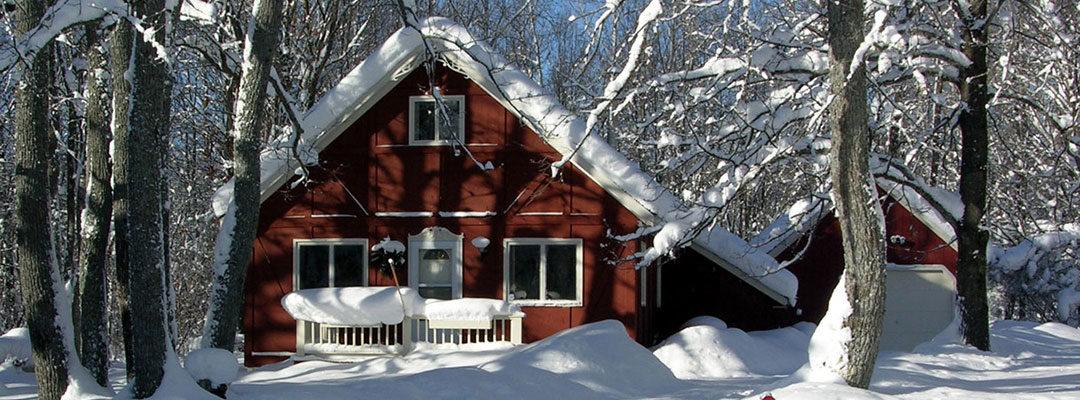Now that the temperatures are starting to drop and winter is just around the corner, it’s time to think about winterizing your summer cabin. Since you may not spend a significant amount of time at your cabin, it’s easy to procrastinate on winterization, but forgetting to take the time to do this before the temperature drops low enough to freeze can result in costly damages, such as flooding from frozen pipes that have burst. Winterizing your cabin is not a difficult thing to do. Keep these tips in mind to ensure your cabin stays safe and dry this winter until you are ready to open it back up in the spring.
Winterize Your Plumbing
If your water heater is propane, change the settings to “vacation” or “pilot.” If it’s electric, turn the breakers marked “water heater” off on the electrical service panel. Then shut off your cabin’s water, which is typically located directly underneath the main floor of the cabin. Once you’ve found the shut-off valve and turned the water off, open the water faucet at the lowest elevation (exterior is best if it’s available) and leave it open. Next, flush all toilets and open each water faucet throughout the cabin, including the shower or tub and sinks, to remove as much water as possible from the system.
Don’t Forget the Appliances
If you turn the heat off in your cabin during the winter, be sure to drain all appliances that use water, including the dishwasher and washing machine. Remove and drain the inlet hoses for these large appliances, then clear the water valve by turning them on for a few seconds, then draining the tub. Remove the drain hoses and empty them completely, then disconnect the electric supply. Consult your owner’s manual for more specific guidelines or hire a professional to help you if you’re unsure of how to do it yourself.
Check Your Furnace
Before you close down your cabin for the winter, be sure to check your furnace, vacuum the interior, swap out the air filter, and look for wear and tear on the belts. Turn the furnace off if you won’t be at the cabin during the winter months; if you plan on using it periodically, turn the thermostat down to 50 degrees to save on energy costs. If you’re concerned that your furnace may need maintenance, contact a heating and cooling repair company to be sure everything looks the way it should.
Examine Windows for Air Leaks
Old windows that let air leaks in can lead to wasted energy and money if you keep the heat on in your cabin during the winter months. Inspect all windows in the cabin, looking for gaps and rot in the frames, deteriorating caulking, cracked glass, and obvious holes. Air leaks can sometimes be sealed with caulking and winter stripping around frames. For small holes you don’t have time to fix, use mothballs or dryer sheets to keep rodents and other critters out.
Empty and Clean Your Septic or Holding Tank
Septic tanks should be maintained well and pumped out regularly, but especially preceding the winter months. If it gets cold enough, the sewage may freeze, and you can’t guarantee it won’t still be frozen in the spring when you are ready to open the cabin back up. Pumping before the winter will ensure that fresh sewage will be able to enter the tank without any issues or problems. In addition to pumping your septic tank, you may want to consider spreading a layer of straw over the system to help provide additional insulation and keep the sewage from freezing.


Recent Comments